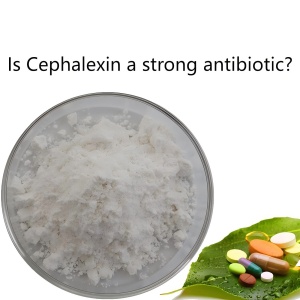Is Cephalexin a strong antibiotic?

Cephalexin is a commonly prescribed antibiotic, but is it considered strong? To answer Is Cephalexin a strong antibiotic? we need to look at its effectiveness, uses, and how it stacks up against other antibiotics. Cephalexin, a first-generation cephalosporin, is reliable for treating a range of bacterial infections, like skin infections, respiratory issues, and urinary tract infections (UTIs). While it’s effective for many conditions, its strength depends on the type of bacteria and infection being treated. Let’s break down what makes Cephalexin a go-to choice, its limitations, and how it fits into the broader world of antibiotics.
Understanding Cephalexin’s Mechanism
Cephalexin works by messing with the bacteria’s ability to build their cell walls, which basically stops them in their tracks. When you’re asking Is Cephalexin a strong antibiotic? it’s worth noting that it’s particularly good at targeting gram-positive bacteria, like Streptococcus and Staphylococcus, which cause things like strep throat or skin infections. It’s less effective against gram-negative bacteria, so for some infections, doctors might pick a different antibiotic. Think of Cephalexin as a solid player for specific infections, but not a one-size-fits-all heavy hitter.
Common Uses and Effectiveness
So, Is Cephalexin a strong antibiotic? Well, it’s a champ for certain infections. Doctors often prescribe it for skin infections like cellulitis, ear infections, or UTIs. It’s also used to prevent infections during surgeries. For these, Cephalexin gets the job done with a good balance of effectiveness and safety. But if the infection is caused by resistant bacteria, like MRSA, or something viral like the flu, Cephalexin won’t cut it. Its strength shines in targeted cases, but it’s not the strongest option for every infection out there.
Comparing Cephalexin to Other Antibiotics
When you’re wondering Is Cephalexin a strong antibiotic? comparing it to others helps. Cephalexin is a first-generation cephalosporin, meaning it’s great for simpler infections but not as broad-spectrum as newer antibiotics like third-generation cephalosporins or drugs like amoxicillin-clavulanate. Those can tackle a wider range of bacteria, including some resistant ones. Cephalexin’s strength is its reliability for common infections with fewer side effects, making it a practical choice for many patients, especially when stronger drugs aren’t needed.
Safe Use and Limitations
Here’s the deal with Is Cephalexin a strong antibiotic? it’s strong enough for what it’s designed to do, but you’ve got to use it right. Taken orally, it’s usually well-tolerated, with side effects like nausea or diarrhea being rare. You need to finish the whole prescription to avoid creating resistant bacteria. If you’re allergic to penicillin, there’s a small chance you might react to Cephalexin too, so always check with your doctor. It’s a solid antibiotic, but its strength depends on the infection and the bacteria causing it.


